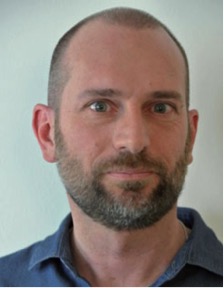
SPEAKER PROFILE |
 Dr. Luigi Bonacina Department of Applied Physics, University of Geneva Switzerland |
Dielectric Harmonic Nanoparticles for Cell Detection and Tracking in the Second Infrared Optical Window of Tissues (NIR-II)
Abstract
The term Harmonic Nanoparticles (HNPs) designates a family of metal oxide nanocrystals possessing appealing optical properties aside from classical luminescence. In fact, because of the lack of inversion symmetry in their crystal structure, these materials display high nonlinear optical response. In particular, the lowest term of their nonlinear susceptibility, X(2), is non vanishing differently from the case of isotropic materials. For this reason, they are primarily employed in imaging applications based on second harmonic generation. We have recently shown that third and even fourth harmonic generation are also very efficient for some of these materials, hence the name. The distinctive features of HNPs as opposed to luminescent NPs include their spectral flexibility (spanning from the ultraviolet to the infrared). This asset is particularly attractive for bio-imaging applications, as HNPs allow working at laser wavelengths beyond the "classical" tissue transparency window (NIR I: 650-950 nm), in the newly proposed NIR II (1100-1350 nm) and NIR III (1600-1870 nm) windows. Working in these spectral regions enables sensibly deeper imaging penetration because of reduced tissue scattering. After introducing the nonlinear optical properties of HNPs, I will discuss their use for tracking labelled cells in tissue by simultaneous second and third harmonic acquisition, demonstrating highly specific retrieval of cancer metastases in lungs and stem cells in muscle at > 1 mm depth. I will also show how such multi-harmonic approach can be extended to high-speed detection of HNP-labeled cells in whole blood.
Bio
Luigi Bonacina started his academic career at the University of Milan. After a Master in Optics, he moved to Switzerland where he completed a PhD at Swiss Federal Institute of Technology of Lausanne (EPFL) with a research in the field of ultrafast molecular spectroscopy. Successively, he joined the University of Geneva where in 2011 he got a tenured position at the Applied Physics Department. His research activities are focused on the combination of nanotechnology and nonlinear optics, aiming at the development of novel bio-imaging approaches for cell detection and tracking for translation to cancer and regenerative medicine.